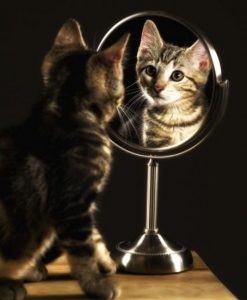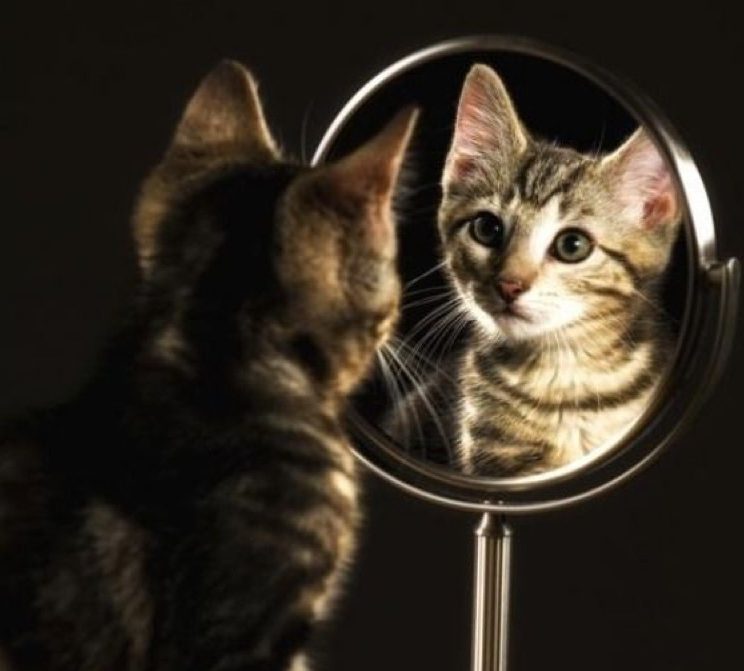This post is also available in Dutch.
Some animals can recognize their reflection in the mirror, similarly to what we humans do. Nevertheless, unlike us humans, they still cannot reflect on their own thoughts and feelings.

Some animals can recognize themselves in the mirror. It is not clear, however, whether cats can do this.
Creative Commons Zero (CC0) license.
Self-awareness is a distinctive human feature. Self-awareness is generally referred to as the capacity for introspection and the ability to recognize oneself as an. An apparent prerequisite for a creature to be considered self-aware is the ability to have self-recognition. This ability appears in babies between 12-24 months, when they begin to recognize themselves in the mirror. Some animals can also recognize themselves. However, this does not necessarily mean that these animals are self-aware.
The mirror test
In 1970, Dr. Gordon Gallup developed a test to determine whether animals could recognize themselves in the mirror. Researchers would stick a mark above the animal’s eye (so that it can’t be seen by the animal), and would place the animal in front of a mirror. While looking in the mirror, an animal would start touching the mark above its eye, and this has been interpreted as self-recognition. In other words, the animal recognizes the reflected image as their own reflection, not as an image of some other animal. The mirror test was a traditional tool to examine an animal’s self-awareness. Nowadays, however, it is considered to offer evidence regarding self-recognition rather than self-awareness.
Animals can recognize themselves
Not all animals pass the self-recognition test. Among the lucky ones are orcas, dolphins, Eurasian magpies and the great apes (humans included). In addition, the evidence within species is not consistent, meaning that some elephants pass the test, while others do not.
Dr. Frans de Waal recently replicated the mirror test with elephants (click here to watch, 52:00). Three elephants were tested, and all three exhibited non-social responses to the mirror reflection. The elephants would open their mouth to inspect inside or they would put their ear next to the mirror and simply look at it. A female elephant had even succeeded at passing the mirror test by hitting her mark with her trunk. In other words, all the elephants showed that they were able to connect the reflection in the mirror to themselves, but only one was interested in the mark. Seeing how some animals were interested in the mark and some were not, reveals how important it is to carefully design such tests for particular animals. Otherwise, phenomena such as self-recognition can be easily misconstrued due to flaws in the experimental design.
Self-awareness ? Self-recognition
There is little doubt that by passing the mirror test, or by showing self-guided behavior in front of a mirror, reflects the capacity of self-recognition. The debate arises when we ask ourselves what it means in terms of self-awareness. For the moment, the mirror test can tell us that a creature – animal or human – is aware of its body. The test is certainly not informative if we want to know if that animal is capable of reflecting on its past experiences or mental states. Therefore, if an animal is able to recognize itself, it doesn’t necessarily mean that the animal is self-aware. But it also doesn’t necessarily mean that animals don’t have any self-awareness— our experimental methods may just not be advanced enough yet to study that.
Written by Lara, edited by Marisha&Marpessa, translated by Jeroen.
